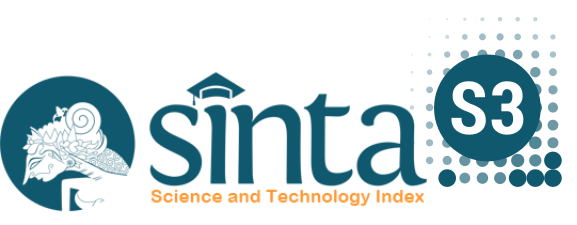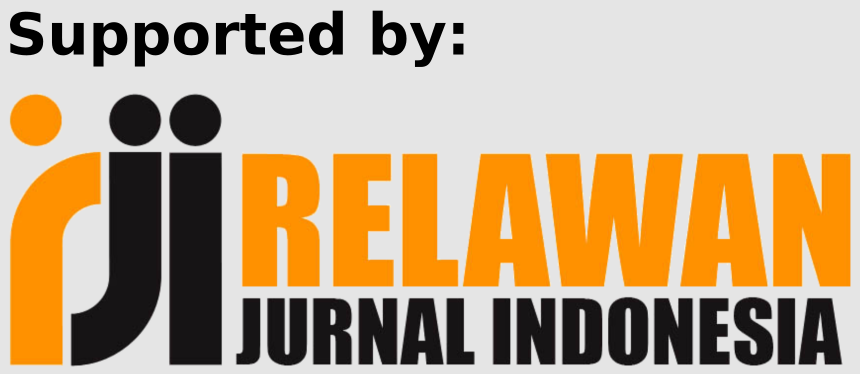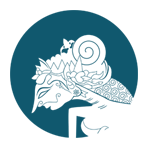The effect of sensory playbook 30 days on the development of children aged 6-36 months in Ngawen District, Gunung Kidul Regency
DOI:
https://doi.org/10.31101/jhtam.2452Abstract views 1311 times
Keywords:
Sensory Play, Child Development, 30 Days Book of Sensory Play Ideas,Abstract
Downloads
References
Butcher. (2016). Cognitive development and sensory play. Quoted from Cognitive development and sensory play - MSU Extension.
Diana. (2010). Monitoring the development of children under five. Andalas Public Health Journal, 4(2), 116-129.
Dolah, Zakaria, & Majid. (2020). Use Of Colored Sand To Enhance Learning Experiences Among Slow Learners. Journal of Critical Reviews, 7(18). http://dx.doi.org/10.31838/jcr.07.12.10
Fitriani. (2018). Physical Motor Development of Early Childhood. Golden Age Journal, 2(1), 25.
Gladstone, Douglas, Chimoyo, Jolley, Lynch, McLinden, & Schmidt. (2018). I have learned to love the child and give opportunities to play with peersâ€: A feasibility study of the training program to support parents of young children with visual impairment in Malawi. Journal of Early Childhood Research, 16(2), 210–225. https://doi.org/10.1177/1476718x18761219.
Hosseini, & Padhy. (2021). Body Image Distortion. 2021 Sep 9. In: StatPearls [Internet]. Treasure Island (FL): StatPearls Publishing; 2021 Jan. PMID: 31536191.
Kostania. (2020). Adaptation of New Habits in Midwifery in the era of the Covid-19 Pandemic. In Angewandte Chemie International Edition, 6(11), 951-952. https://ejournal.unisba.ac.id/index.php/kajian_akuntansi/article/view/2615%0Ahttp://schol ar.unand.ac.id/60566/
Kurniati, & Yuni. (2020). Relationship of Posyandu Cadre Participation in the Implementation of Complete Basic Immunization. Journal of Medical Science Health Science Academy of Midwifery Budi Mulia Palembang, 10(1), 72=77. https://doi.org/10.35325/kebidanan.v10i1.227
Legiati, Hidayanti, & Indrayani. (2020). Mother Toddler Class Improving Mother's Knowledge and Skills in Stimulating Growth and Development. Journal of Prima Health, 13(2), 115. https://doi.org/10.32807/jkp.v13i2.240
Lestari, & Hati. (2016). The Influence of Stimulation in Children Aged 12-36 Months in Sedayu Regency, Bantul. Indonesian Journal of Nurses and Midwifery, 4(1), 44-46. https://doi.org/http://dx.doi.org/10.21927/jnki
Ningtya, & Haenilah. (2018). Origami Paper Folding Activities Improve Fine Motor Development in Early Childhood. Journal of Children's Education, 4(2), 1-10.
Nurmasari. (2016). Relationship of Intensity of Gadget Use With Delay of Development In Speaking And Language Aspects In Tod Tambakrejo Surabaya. Thesis thesis, Universitas Airlangga.
Rahma. (2017). The Use of Educational Game Tools (APE) to Support the Development of Children Aged 5-6 Years at Al Fikri Early Childhood Education. Journal of Equatorial Education and Learning, 6(10), 2015.
Rofita, D., Ismail, D., & Hakimi, M. (2021). The relationship between parenting style and social development among toddlers in Yogyakarta. Journal of Health Technology Assessment in Midwifery, 4(2).
Rosiyanah, Yufiarti, & Meilani. (2020). “Development of Sensory Stimulation Media for Children Age 4-6 Years Based on Seven-Sense Playing Activities, Journal of Obsession: Journal of Early Childhood Education, 5(1), 941-956. https://doi.org/10.31004/obsess.v5i1.758.
Runcan, Petracovschi, & Borca. (2012). The importance of play in the parent-child interaction. Procedia-Social and Behavioral Sciences, 46(1), 795-799. https://doi.org/10.1016/j.sbspro.2012.05.201
Sari, Sukartiningsih, & Jannah. (2018). The effect of geometric puzzle game towards children's recognition of geometric shapes and fine motor. Advances in Social Science, Education and Humanities Research, 2(1), Advances in Social Science, Education and Humaniti.
Septianingrum, & Yasintha. (2018). Attachment Mother and Child Through Play. In 4th ASEAN Conference on Psychology, Counselling, and Humanities (ACPCH 2018).
Virianingsih. (2021). Development of a Two-Sided Maze Educational Game Tool (Madasi) to Stimulate Children's Sensory Motor Skills,. Journal of Early Childhood Education Undiksha, 9(2), 117-126.
Zainiyah, Z., & Susanti, E. (2020). Anxiety in Pregnant Women During Coronavirus (Covid-19) Pandemic in East Java, Indonesia. Majalah Kedokteran Bandung, 52(3), 149-153. https://doi.org/10.15395/mkb.v52n3.2043
Downloads
Published
How to Cite
Issue
Section
License
Copyright (c) 2022 Siti Nurhidayati

This work is licensed under a Creative Commons Attribution-ShareAlike 4.0 International License.
Authors who publish with Journal of Health Technology Assessment in Midwifery agree to the following terms:
- Authors retain copyright and grant the journal right of first publication with the work simultaneously licensed under a Creative Commons Attribution License (CC BY-SA 4.0) that allows others to share the work with an acknowledgment of the work's authorship and initial publication in this journal.
- Authors are able to enter into separate, additional contractual arrangements for the non-exclusive distribution of the journal's published version of the work (e.g., post it to an institutional repository or publish it in a book), with an acknowledgment of its initial publication in this journal.
- Authors are permitted and encouraged to post their work online (e.g., in institutional repositories or on their website) prior to and during the submission process, as it can lead to productive exchanges, as well as earlier and greater citation of published work.

Journal of Health Technology Assessment in Midwifery is licensed under a Creative Commons Attribution-ShareAlike 4.0 International License..













